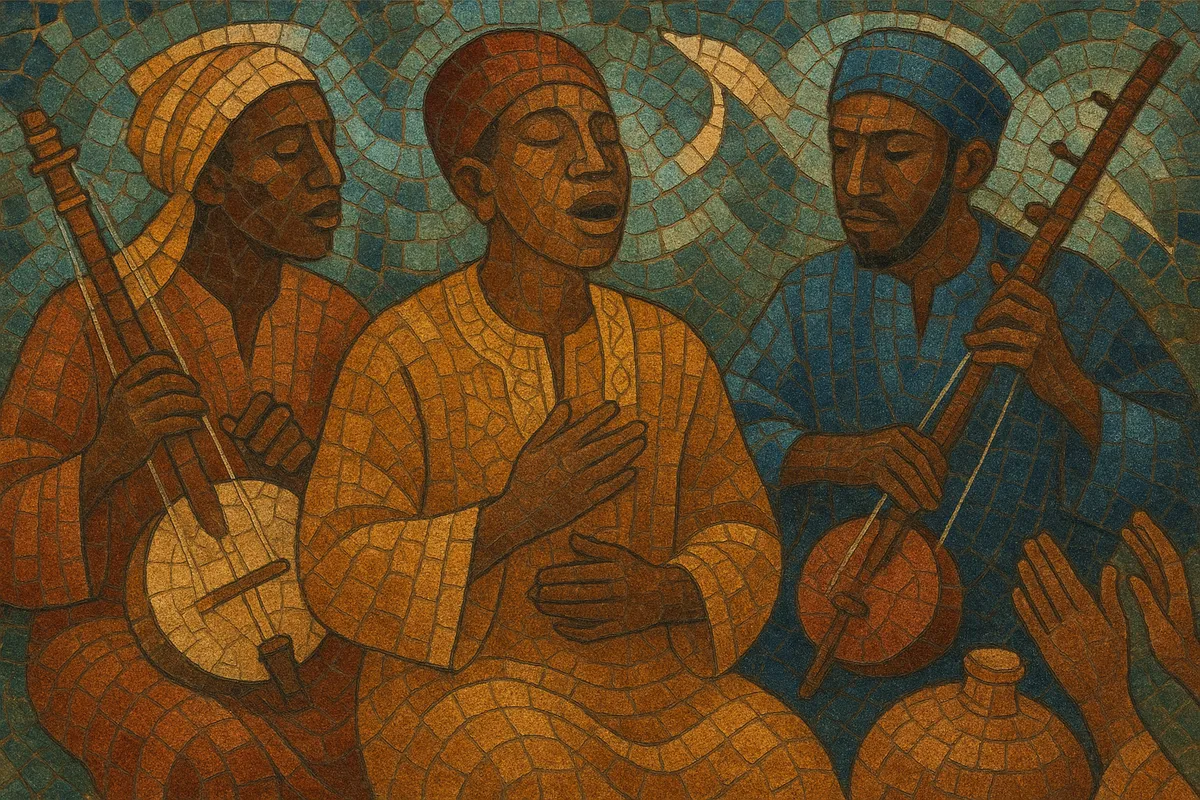Fula music (also called Pulaar/Fulfulde/Peul music) refers to the traditional and popular music of the Fulani (Fulɓe) people, a trans‑Sahelian community spread from Senegal and Guinea through Mali and Niger to Nigeria and Cameroon.
It is characterized by nimble, cyclical lute ostinatos (on the hoddu/xalam), expressive single‑string fiddle lines (nyanyeru/goje), breathy overblown flute melodies (the three‑hole tambin or "Fula flute"), handclaps and calabash percussion, and highly ornamented vocals. Melodies often use pentatonic or modal scalar frameworks with melisma and subtle pitch inflections influenced by Islamic recitation. Lyrics in Pulaar/Fulfulde celebrate pastoral life, lineage and praise, moral counsel, love, migration, and community events such as cattle festivals and weddings.
Fula musical practice developed within Fulani pastoral and urban courts across the Senegal River valley and Fouta Djallon highlands, spreading eastward through the Sahel. Core instruments—hoddu (xalam lute), nyanyeru/goje (one‑string fiddle), and the tambin (Fula flute)—served praise‑singers and community musicians at naming ceremonies, marriages, herding gatherings, and leadership installations. Vocal delivery and modal sensibility reflect centuries of Islamic learning, with ornamental recitation shaping phrasing and melodic turns.
European travelers, colonial administrators, and early ethnographers documented Fula repertoires in the 19th and early 20th centuries, noting praise poetry, cattle‑herding songs, and Gerewol (Wodaabe) festival music. Radio networks (Dakar, Bamako, Conakry) and state ensembles later helped fix regional styles on record. Migration to cities brought hoddu and nyanyeru into dialogue with balafon, guitar, and later drum kits and keyboards, while Pulaar/Fulfulde lyrics retained pastoral imagery and genealogical praise.
From the late 20th century, artists such as Baaba Maal and Mansour Seck carried Pulaar songcraft onto international stages, fusing hoddu ostinatos and Fula flute with guitar, synthesizers, and drum set. Nigerian Hausa‑Fulani singers like Mamman Shata and Dan Maraya Jos popularized kindred lute‑and‑voice formats. Contemporary performers—traditional ensembles from Fouta Toro and Fouta Djallon, Malian Fulani singers, and diaspora projects like Fula Flute—have mapped Fula aesthetics onto worldbeat, afropop, and acoustic crossover scenes, while local ceremonies and festivals continue to sustain the core tradition.


